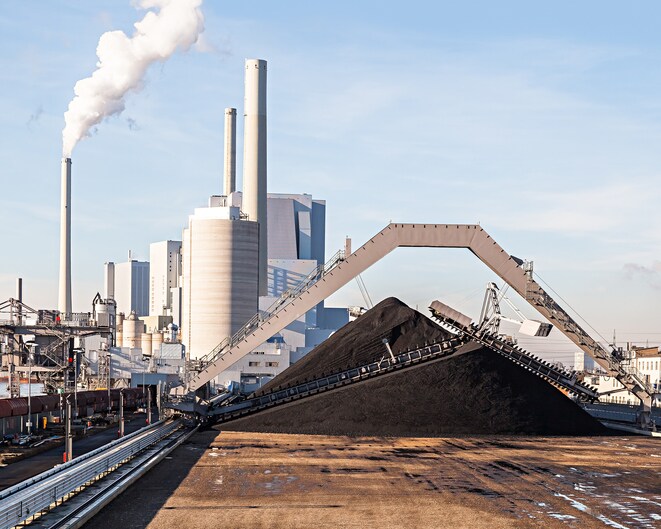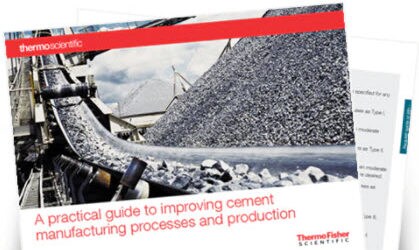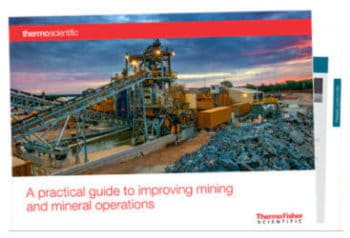 Industrial Info Resources reported last month that “U.S. power-generation companies that use coal as a resource are enjoying a demand surge. A massive energy crunch is sending prices for natural gas–coal’s biggest competitor–to unforeseen highs. Nonetheless, power generators acknowledge coal’s long-term prospects as an energy feedstock face a likely insurmountable structural disadvantage. At least for the near term, they will need to keep their coal-based facilities in the best possible shape to handle rising demand.”
Industrial Info Resources reported last month that “U.S. power-generation companies that use coal as a resource are enjoying a demand surge. A massive energy crunch is sending prices for natural gas–coal’s biggest competitor–to unforeseen highs. Nonetheless, power generators acknowledge coal’s long-term prospects as an energy feedstock face a likely insurmountable structural disadvantage. At least for the near term, they will need to keep their coal-based facilities in the best possible shape to handle rising demand.”
Keeping those coal power generation facilities in shape takes numerous technologies — whether it’s for the coal or the facility.
Consistent Coal Blends
Coal exists in various forms including lignite, sub-bituminous, bituminous, and anthracite. Each contains varying amounts of hydrogen, oxygen, nitrogen, sulfur, and carbon, and as a result they have different combustion properties. The efficiency and cost of power generation operation is directly tied to the fuel being used.
Online elemental coal analyzers and blending technology can measure the composition of coal in real-time and proactively address process variations to ensure more consistent coal blends. The latest analyzers use either Prompt Gamma Neutron Activation (PGNAA) or Pulsed Fast Thermal Neutron Activation (PFTNA) technology to help provide coal producers with accurate, reliable data to control coal blends and ensure on-spec batches.
PGNAA and PFTNA are noncontact, non-destructive analytical techniques used in online coal analysis systems to determine the elemental composition of coal. Both of these techniques are known collectively as neutron activation analysis and function by bombarding materials with neutrons. Using PGNAA/PFTNA to analyze the incoming coal delivers valuable information on levels of sulfur, moisture, total ash, calorific value, ash elemental concentration, and other critical parameters. PGNAA /PFTNA solutions help in blending, proportioning and sorting, which helps control stockpile chemistry to consistently meet quality targets, with minimal variations within and between piles.
- Blending in this manner helps ensure smooth downstream processing and minimizes process upsets while at the same time providing flexibility to quarry/mine operations. Analyzers can track the chemistry of the stockpile compared to the target chemistry and determine the preferred proportions of the source raw materials. Chemical uniformity can be achieved through precise control of the raw mix/fluxes/slag-builder resulting in improved process efficiency.
- Automated proportioning can be accomplished with analyses triggering proportioning changes as frequently as each minute. A cost minimization algorithm used in conjunction with operator-defined quality priorities, can provide optimized chemistry while minimizing material costs.
- Sorting can be done based on the economic component of different materials or the concentration of impurities. Technology is available to automatically send signals to flop gates or traveling overhead trippers to place materials in locations based on composition.
These processes help maximize the use of resources, enable optimal blending for precise burn and temperature requirements, and reduce pollutants.
Structural Integrity of Metals
Another technology used to help keep operations in shape involves the metals used in the piping at the plant. The structural integrity of pipelines and power generation plant assets is key for safety and operational efficiencies. Material anomalies in metal production and construction processes can have profound effects on the final product, so today’s best practice is to analyze 100% of critical materials used in the plant’s infrastructure.
Handheld XRF analyzers enable positive material identification (PMI) on infrastructure in the plant, such as piping material, to help ensure it does not contain incorrect or out of specification metal alloys that could lead to failure. This technique can be used effectively by manufacturers who supply the piping before they are shipped to the power plant as well as to verify and spot check onsite the piping equipment, facility assets and materials.
X-ray fluorescence spectroscopy (XRF) is a non-destructive analytical technique that works by measuring the fluorescent (or secondary) X-rays emitted from a sample when excited by a primary X-ray source. Each element present in a sample produces a set of characteristic fluorescent X-rays, or “unique fingerprints.” These fingerprints are distinct for each element, making XRF analysis an excellent tool for quantitative and qualitative measurements of materials. These XRF analyzers deliver results in minutes to help ensure that no incorrect or out of specification metal alloys have entered the manufacturing process or exist in the plant. This type of analysis can prevent catastrophic failures, reduce downtime, and mitigate risk.
Laser Induced Breakdown Spectroscopy (LIBS) is an analytical technique used to determine the elemental composition of materials. Handheld LIBS analyzers work by using a high-focused laser to ablate the surface of a sample. A plasma is formed consisting of electronically excited atoms and ions. As these atoms decay back into their ground states, they emit characteristic wavelengths of light. These wavelengths are distinct for each element, making handheld LIBS analysis an excellent tool for quantitative and qualitative measurements.
Health and Safety of Workers
Keeping operations in shape also means preventing downtime, meeting health and safety regulatory requirements, reducing insurance costs, and generally protecting your most valuable investment – your workforce.
Coal naturally contains trace amounts of radioactive elements. And because of the extensive use of radioactive measurement and analysis techniques (e.g. X-ray and Gamma ray analyzers) in power generation plants, the potential for exposure to personnel increases dramatically. Both natural and man-made sources of radiation are potentially dangerous and life threatening if not managed appropriately. Detection of various types of radiation throughout the process is paramount to worker safety and quality control. Radiation detection technology can be delivered by way of multiple devices, each suited for the type of radiation to be monitored, the environmental circumstances and source.
Tramp metal detectors and equipment operation safety sensors and switches are designed to keep workers safe and productive, reduce liability, mitigate risk, and increase efficiency in your coal fired power plant.
Additional Resources
You can read about the latest solutions and technologies to help shape up coal-fired power generation plants on our newly revamped web pages Technologies and Solutions to Improve Coal-Fired Power Generation






Leave a Reply